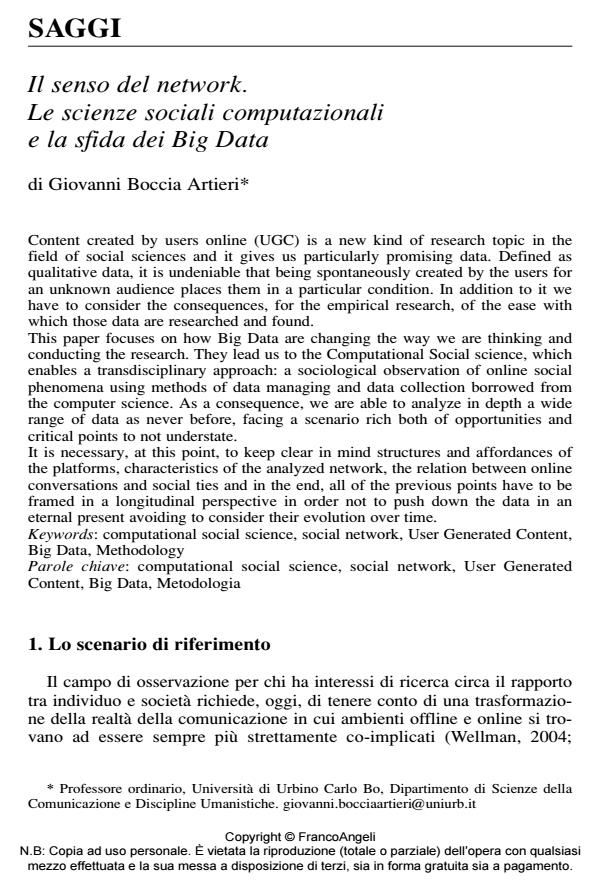Il senso del network. Le scienze sociali computazionali e la sfida dei Big Data
Journal title SALUTE E SOCIETÀ
Author/s Giovanni Boccia Artieri
Publishing Year 2014 Issue 2014/3
Language Italian Pages 14 P. 25-38 File size 518 KB
DOI 10.3280/SES2014-003003
DOI is like a bar code for intellectual property: to have more infomation
click here
Below, you can see the article first page
If you want to buy this article in PDF format, you can do it, following the instructions to buy download credits

FrancoAngeli is member of Publishers International Linking Association, Inc (PILA), a not-for-profit association which run the CrossRef service enabling links to and from online scholarly content.
Content created by users online (UGC) is a new kind of research topic in the field of social sciences and it gives us particularly promising data. Defined as qualitative data, it is undeniable that being spontaneously created by the users for an unknown audience places them in a particular condition. In addition to it we have to consider the consequences, for the empirical research, of the ease with which those data are researched and found. This paper focuses on how Big Data are changing the way we are thinking and conducting the research. They lead us to the Computational Social science, which enables a transdisciplinary approach: a sociological observation of online social phenomena using methods of data managing and data collection borrowed from the computer science. As a consequence, we are able to analyze in depth a wide range of data as never before, facing a scenario rich both of opportunities and critical points to not understate. It is necessary, at this point, to keep clear in mind structures and affordances of the platforms, characteristics of the analyzed network, the relation between online conversations and social ties and in the end, all of the previous points have to be framed in a longitudinal perspective in order not to push down the data in an eternal present avoiding to consider their evolution over time.
Keywords: Computational social science, social network, User Generated Content, Big Data, Methodology
- Immagini per il presente. L'evento catastrofico nei Twitter online (visual) data Giovanni Boccia Artieri, Laura Gemini, Manolo Farci, Elisabetta Zurovac, in SOCIOLOGIA DELLA COMUNICAZIONE 49/2015 pp.55
DOI: 10.3280/SC2015-049005
Giovanni Boccia Artieri, Il senso del network. Le scienze sociali computazionali e la sfida dei Big Data in "SALUTE E SOCIETÀ" 3/2014, pp 25-38, DOI: 10.3280/SES2014-003003